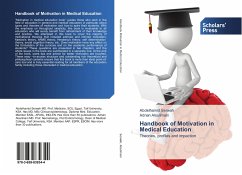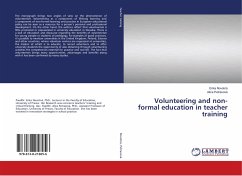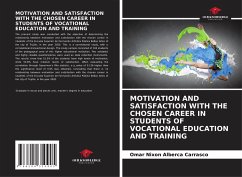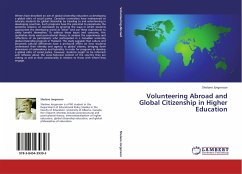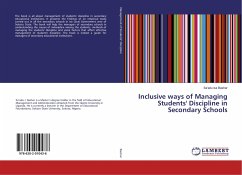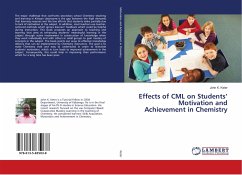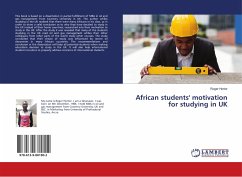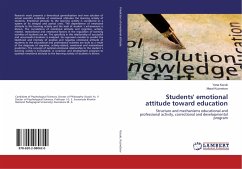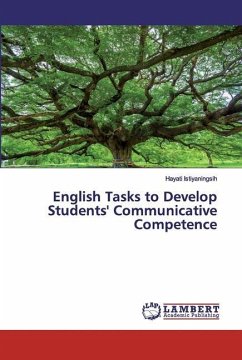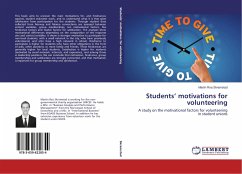
Students' motivations for volunteering
A study on the motivational factors for volunteering in student unions
Versandkostenfrei!
Versandfertig in 6-10 Tagen
41,99 €
inkl. MwSt.

PAYBACK Punkte
21 °P sammeln!
This book aims to uncover the main motivations for, and hindrances against, student volunteer work, and to understand what it is that gives satisfaction from participation for the students. Through student data collected from Norway and Mexico connections are assessed between control variables, group memberships, ten motivational factors, five hindrance factors and twelve factors for satisfaction. The analyses show motivational differences depending on the composition of the response sets and control variables. It shows a stronger motivation to participate for non-local students, with a small ...
This book aims to uncover the main motivations for, and hindrances against, student volunteer work, and to understand what it is that gives satisfaction from participation for the students. Through student data collected from Norway and Mexico connections are assessed between control variables, group memberships, ten motivational factors, five hindrance factors and twelve factors for satisfaction. The analyses show motivational differences depending on the composition of the response sets and control variables. It shows a stronger motivation to participate for non-local students, with a small network in the city, who have previously volunteered, and who have a high network in school. Hindrance to participate is higher for students who have other obligations in the form of jobs, other positions, or more family and friends. These hindrances are generally higher for local students. Satisfaction is higher for students motivated by social network, interests, and experience, and among those in leadership positions. We can conclude that motivation, hindrance, group memberships and satisfaction are strongly connected, and that motivation is important for group membership and satisfaction.



